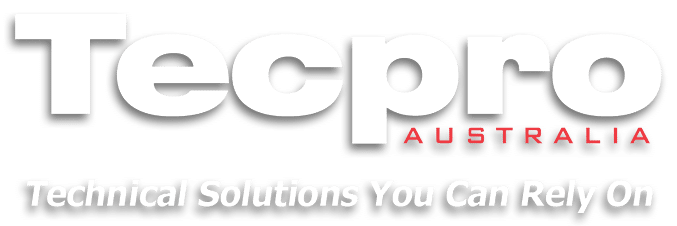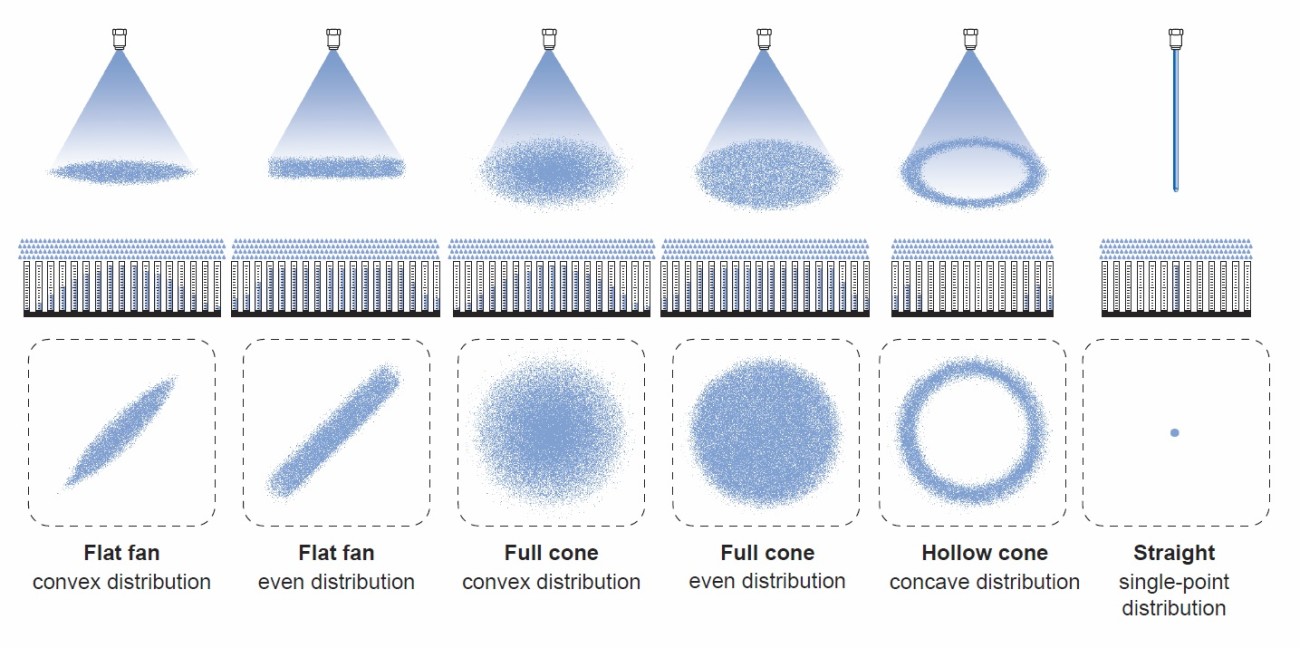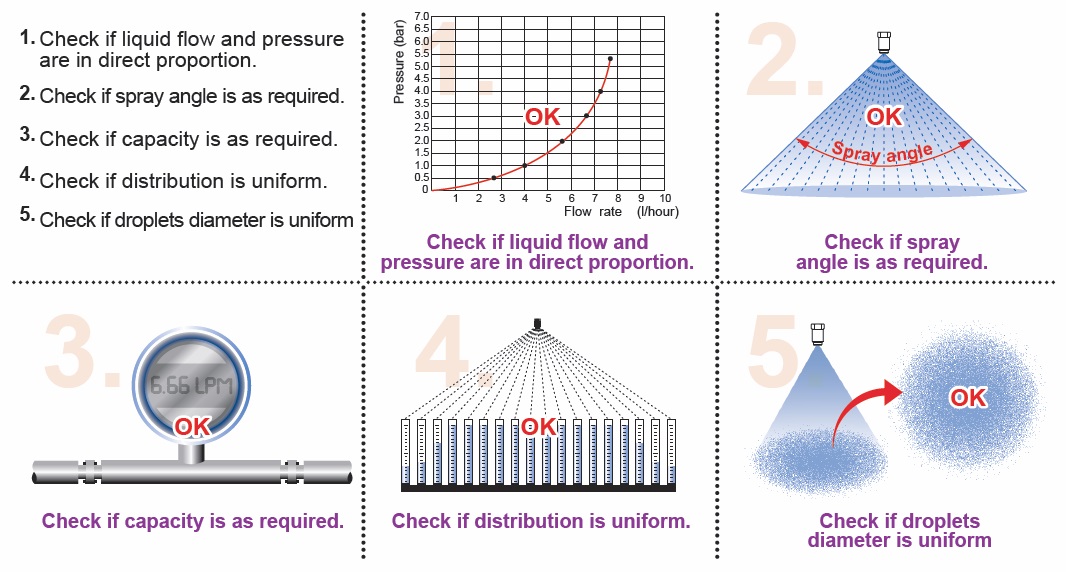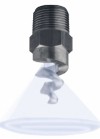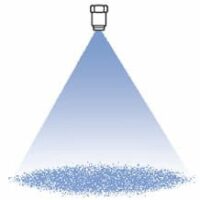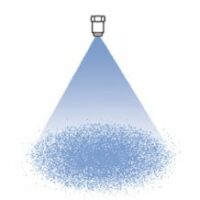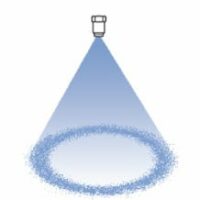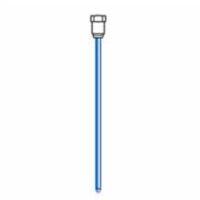When selecting spray nozzles to optimise your spraying system there are a number of factors to take into account, including the liquid to be sprayed, the purpose of spraying, the type of droplet required, the available pressure and volume. The information below serves to assist with understanding the critical factors behind nozzle selection. Contact the technical team at Tecpro Australia for the right nozzle advice to ensure optimal performance from your spraying system.
THE PROCESS OF ATOMIZATION
A liquid spraying process can be described as consisting of two phases, namely: 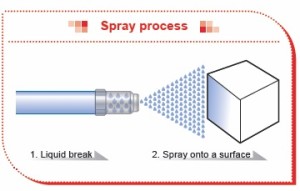
- breaking of the liquid into separate droplets
- directing the liquid drops onto a surface or an object, to achieve the desired result.
Modern technology allows for a strict control of different parameters of a liquid spray; for example precise information can be obtained about droplet size spectrum, droplets speed and liquid distribution onto the spray target. In recent years we’ve supported our customers in improving their productivity and market share by providing them cutting edge industrial techniques. Tecpro Australia is you best partner to help you enhance your productivity and quality.
APPLICATIONS
Spraying liquid through a spray nozzle can serve many different purposes such as: –
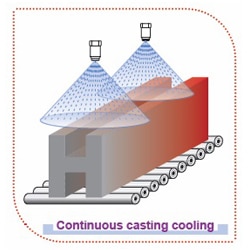
Cooling: heat transfer by spraying liquids onto the product surface for rapid cooling, such as continuous casting cooling in steelworks.
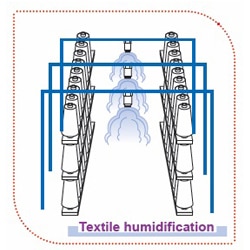
Humidification: spray of mist onto the products surface in chambers or rooms to raise relative humidity. Eg textiles humidification.
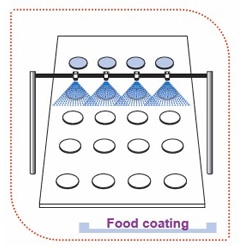
Coating: application of coatings or liquids on food products surface. For example: oil-spraying on bread, spraying egg onto bakery items.
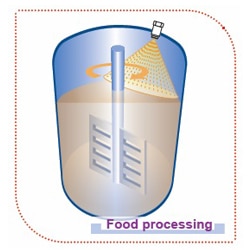
Food processing: addition of specific ingredients or substances to speed up chemical reactions. For ex: addition of fructose in fruit juices, etc.
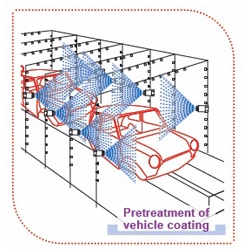
Washing: remove dirt from the product surface by spraying liquids at high pressure, like in vehicles pre-wash treatment prior to painting or coating.
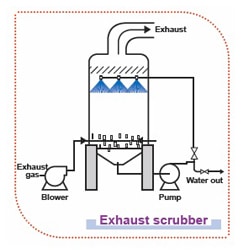
Pollution control: use of atomized scrubbing liquids to capture particulate matter and/or gaseous pollutants in liquid droplets, like in wet scrubbers.
HOW TO CHOOSE THE MOST SUITABLE NOZZLE FOR YOUR APPLICATION?
This is the first question most customers ask themselves. Do not be afraid to choose the wrong one. Contact us, tell us what you need and we will help you to make the right choice explaining how our nozzles work in a simple and user-friendly way. Several technical features must be taken into account to select the proper nozzle.
1. NOZZLE EFFICIENCY
A spray nozzle is a device that turns the pressure energy of a liquid flow into kinetic energy. The nozzle efficiency can be defined as the ratio between the energy available at the nozzle inlet and the energy wich is actually used to increase the liquid speed and create the spray, the difference being the energy lost during the process because of friction. Depending on the nozzle type and quality of machining, the nozzle efficiency varies between 55% and 95% for the types that are commonly used in industrial processes. This however is not valid for air-assisted atomizers which require a much higher energy because of the losses inherent in the energy transfer from compressed air to liquid surface.
2. DROPLET SIZE
The droplet size depends on the structure of the atomizer, intensity of the liquids energy, liquid surface tension and density. The size of the atomized droplets is not uniform. Therefore, the average droplets size becomes an important factor. For example, the droplets size in gas quenching towers is extremely important. If their size is too big, they do not fully evaporate leading to dust bag failure. On the contrary, if the droplets size is too small, it’s not possible to lower the temperature to the desired level and high temperature may cause the dust bags burn out. There are four ways to express the droplets size: The Sauter Mean Diameter (SMD) is the most commonly used. It refers to the drop volume/surface area ratio and it’s often shown as D32, μm(Micron) unit. (*1μm=10-3mm)
MEASUREMENT METHODS
※SMD is tested using pure water at 25°C
Method by immersion: A glass dish containing 60% of silicone oil is passed quickly under the spraying nozzle. Silicon oil is heavier so the water
droplets float on the oil surface. Every droplet diameter is recorded and the resulting average is the SMD. This is a difficult method to perform and for this reason it’s rarely used.
Laser interpherometer test: As different droplets have different PI, they produce different refraction angles. Therefore laser light can be used to measure their size. This type of method is fast and precise. Tecpro’s partner company, PNR Italy can perform this test with technologically advanced equipments and provide complete documentation containing test reports. Please contact Tecpro Australia for more information.
3. SPRAY ANGLE
A spray angle is the angle formed by the cone of liquid leaving a nozzle orifice. The spray angle and the distance between the nozzle orifice and the target surface to be covered determine the spray coverage.
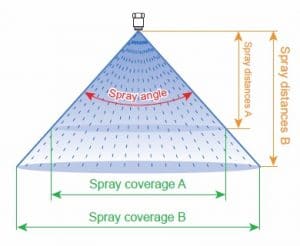
4. IMPACT FORCE
The impact force is the force generated by the jet of water deflected by the impact surface and its strength is often expressed in kg/cm2 or lb/inch2. The uniformity of a jet impact force and distribution influence the washing effect. Under the same operating conditions (same pressure and capacity), different types of nozzles can be used to perform an impact force test and the results are shown here below.
5. DISTRIBUTION
Engineers design nozzles with different spray distribution patterns. Patterns can be solid stream, full cone, hollow cone, flat spray, spoon flat fan. The nozzle design aims at the uniformity and impact force of the jet sprayed whether nozzles are used individually or overlapping. Below figures show detailed information for a variety of capacities and spray sections.
SPRAY NOZZLE QUALITY AND TOLERANCE
Although nozzles are used to atomize liquids, the atomization precision and effect are deeply influenced by their quality. With our expertise we fully understand our customers needs and expectations and our engineers set high quality control standards not only for the operating precision of our nozzles but also for product inspection. We ensure the best atomizing effects and provide capacity and spray angle accuracy with a tolerance of ±5% guarantee. Steps of quality inspection are as follows: –
TECHNIQUES FOR SPRAY PRODUCTION
Many different hydrodynamic techniques can be used to produce a spray and most of them are used today for nozzles to be applied in industrial processes.
PRESSURE NOZZLES
This is the simplest type of nozzle where an orifice is opened into a chamber where the liquid to be sprayed is fed under pressure. A spray is produced through the orifice with spray pattern, flow rate and spray angle depending upon the orifice edge profile and the design of the inside pressure chamber.
Turbulence nozzles use specially shaped vanes which force the pressurized liquid into a whirl chamber producing its high-speed rotation. This breaks up the liquid which exists the nozzle orifice atomized at high-speed. Different nozzle structures and flow rates produce hollow cone, full cone and full square cone spray patterns.
Here the desired spray shape is obtained producing an impact of the liquid jet onto a properly designed surface. The liquid jet is subsequently changed into a fluid lamina and then broken into drops with the desired spray pattern after leaving the nozzle edge. Typical impact nozzles are K series flat fan nozzles, E series spiral full cone nozzles and RC series hollow cone nozzles.
AIR ASSISTED ATOMIZERS
Air-assisted atomizers use their special design and pressurized air or gas to atomize a liquid and break it into tiny droplets (the smallest average particle size: 10 micron).
ULTRASONIC ATOMIZERS
Ultrasonic atomizers are sister products of air-assisted atomizers. The front-end has a titanium ultrasonic generator. It uses the energy of high-speed impact to produce a high-frequency oscillation that micro-atomizes the liquid droplets. The special design produces tiny and uniform droplets (the average smallest particle size: 7 Micron). The advantages are vital to many applications. Ultrasonic atomizers have two phases of atomization. Phase one: liquids mix with pressured air and produce tiny droplets to spray. Phase two: when the atomized droplets hit the ultrasonic generator they get micro-atomized generating smaller droplets.
